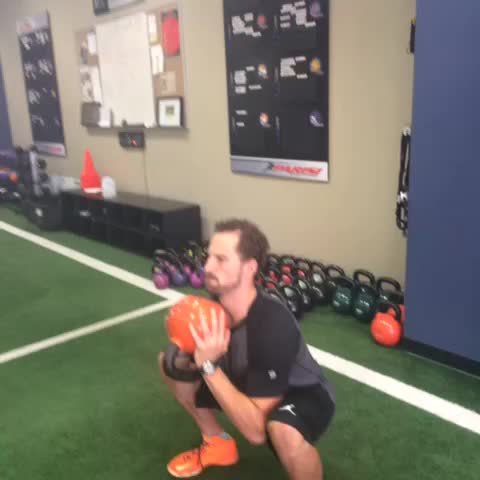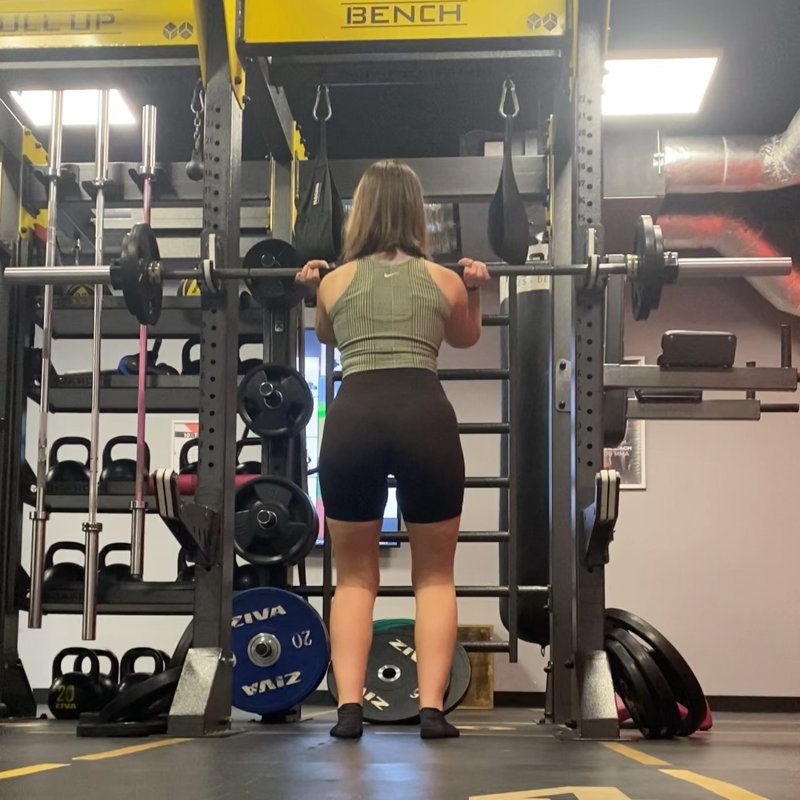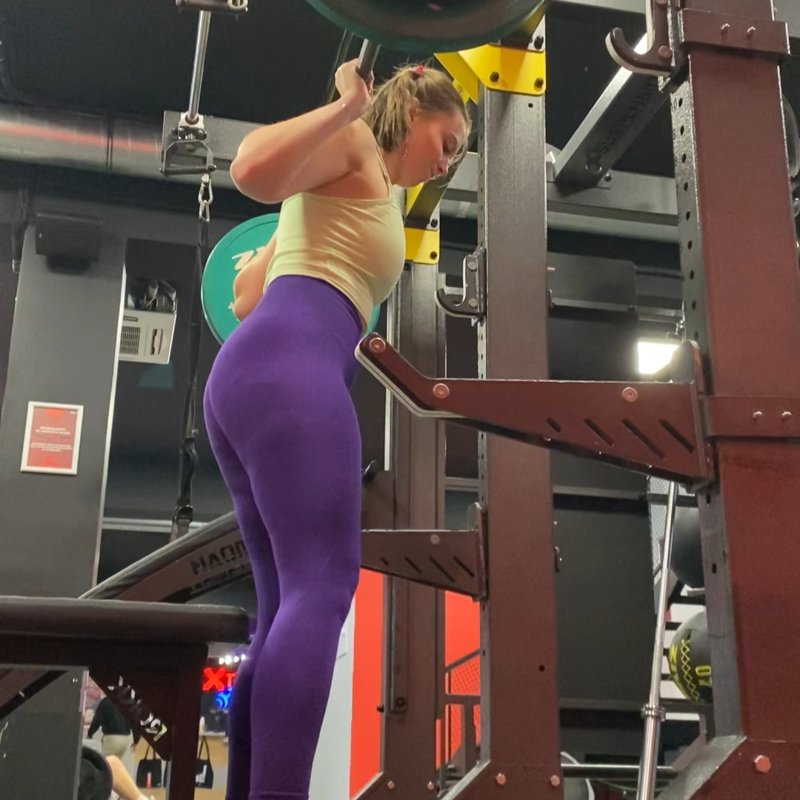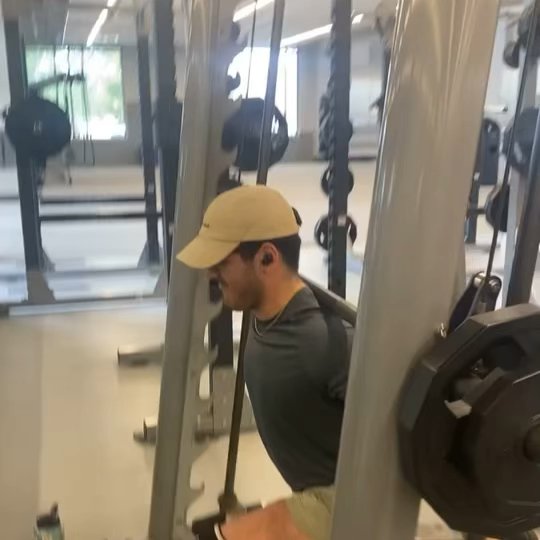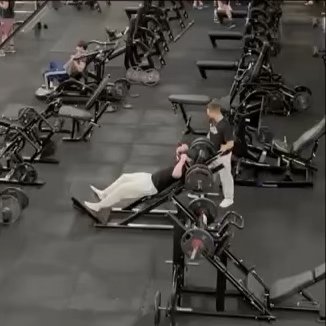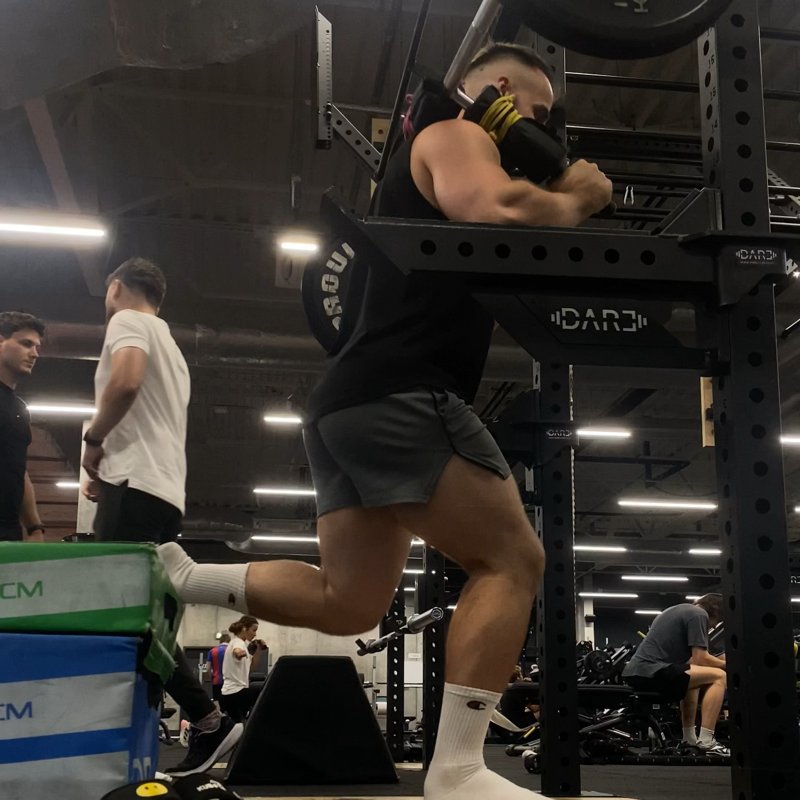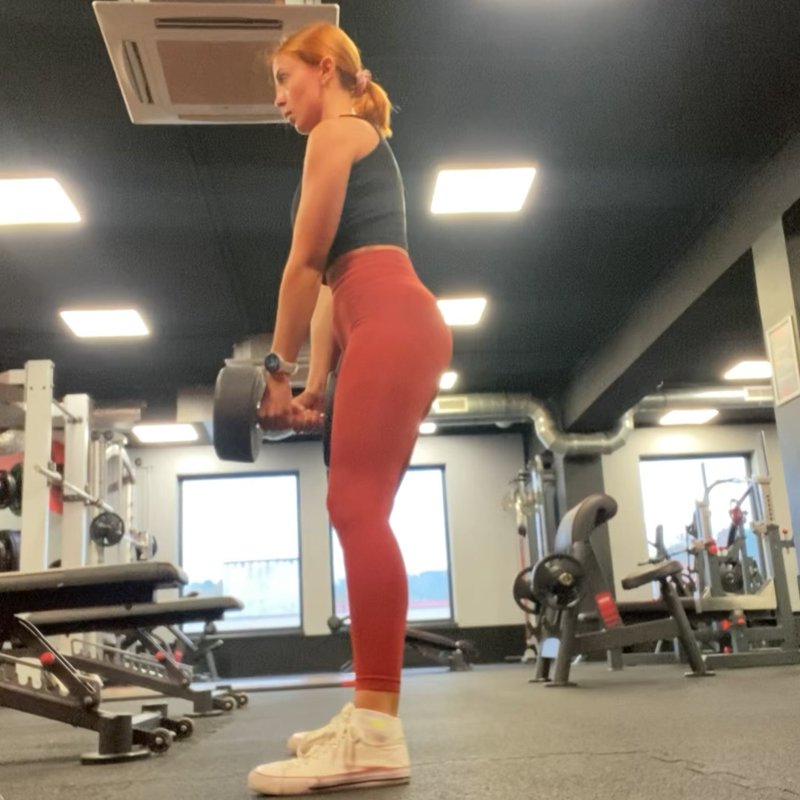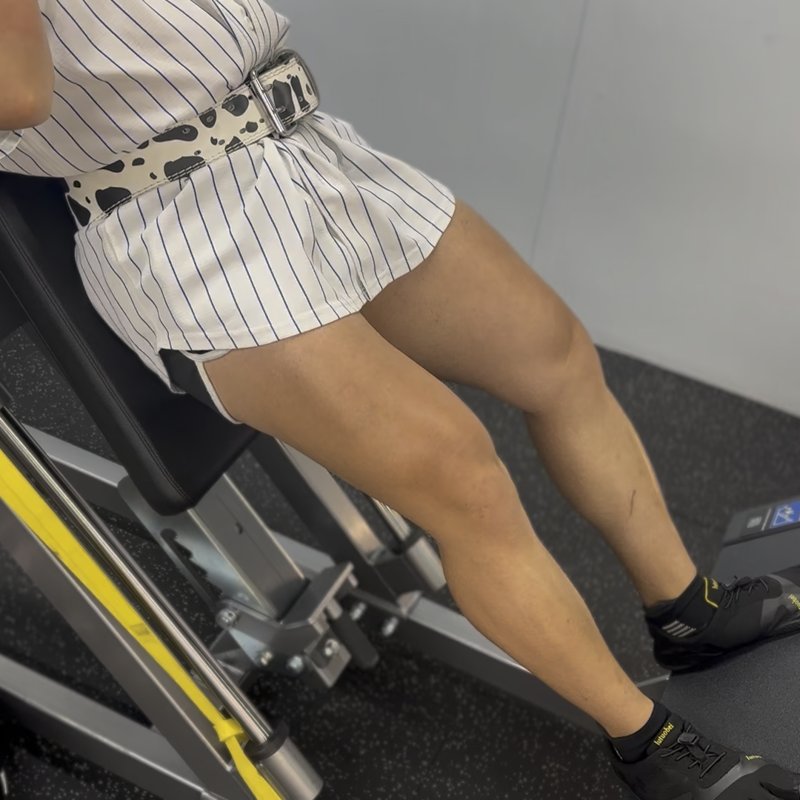Squat: The Ultimate Guide
The squat reigns as the undisputed king of lower body exercises. This comprehensive guide covers proper form, common mistakes, and programming strategies to help you build powerful legs and total-body strength.

Quick Facts
Key Benefit
Builds total-body strength and power while enhancing athletic performance
Primary Muscles
Glutes, Quadriceps
Secondary Muscles
Abdominals, Erector Spinae, Hamstrings, Hip Adductors
Equipment
Barbell, Power Rack
Difficulty
Intermediate
Type
Strength, Compound
In This Guide
Ready to master the Squat?
Track your progress, see improvements over time, and build strength consistently.
Download GravitusAre you ready to master the Squat? This guide will teach you everything you need to know about this foundational strength exercise. The Barbell Squat is often called the "king of all exercises" for good reason. It builds strength throughout your entire body, increases athleticism, and carries over to countless real-world activities. Whether you're looking to build muscle, increase strength, or improve athletic performance, the squat deserves a place in your training program. When performed correctly, it's one of the most effective exercises for developing lower body power. This guide covers proper technique, common mistakes, effective variations, and programming recommendations to help you get the most out of your squats.
Why the Squat Is Worth Mastering
The Squat is more than just another leg exercise in your arsenal. It's a fundamental movement that:
Builds Total-Body Strength
Engages over 200 muscles, making it one of the most efficient exercises for overall strength development.
Increases Athletic Performance
Enhances jumping ability, sprinting power, and overall athletic capacity by developing force production in the lower body.
Improves Functional Movement
Strengthens the exact movement pattern used in countless daily activities, from sitting down to lifting objects from the ground.
Proper Squat Form: Step-by-Step
Starting Position
- Set the barbell at upper chest height on the rack and position it across your upper back (not on your neck).
- Grip the bar with hands placed evenly outside your shoulders, elbows pointing down.
- Unrack the bar, take 2-3 steps back, and set your feet shoulder-width apart with toes slightly turned out.
The Movement
- Take a deep breath, brace your core, and initiate the movement by pushing your hips back first, then bending your knees.
- Keep your chest up, back neutral, and knees tracking in line with your toes as you descend.
- Lower yourself until your thighs are at least parallel to the floor (or deeper if mobility allows), then drive through your heels and mid-foot to stand back up.
Key Form Tips
Knee Tracking
Keep your knees in line with your toes, never caving inward.
Torso Position
Keep your chest up; avoid rising with the hips first ("good morning" squat).
Foot Pressure
Think about screwing your feet into the floor to engage your hips and maintain knee position.
Bar Path
Keep the bar moving in a vertical line over mid-foot.
Breathing
Inhale at the top, brace your core, hold during the movement, and exhale at the top.
Hip Drive
Focus on driving your hips forward as you rise to engage glutes properly.
Muscles Worked in the Squat
Primary Muscles
- quadriceps: The quads are heavily engaged to extend the knee as you push back up from the bottom position.
- glutes: The gluteus maximus is powerfully activated to drive hip extension, especially in the latter part of the upward movement.
Secondary Muscles
- hamstrings: The hamstrings work eccentrically during the descent and assist with hip extension on the way up.
- hip adductors: The inner thigh muscles help stabilize the hip and knee joints throughout the movement.
- erector spinae: These back muscles work isometrically to maintain an upright torso position throughout the squat.
- abdominals: The entire core musculature, including the abdominals and obliques, works to stabilize the trunk.
Common Mistakes and How to Avoid Them
Knees caving inward
Places stress on knee ligaments and reduces glute activation Fix it: Focus on pushing knees outward during the entire movement, think about "spreading the floor"
Rising with hips first (good morning squat)
Places excessive strain on the lower back Fix it: Keep chest up and focus on driving traps into the bar while maintaining a more vertical torso
Squat Variations
Beginner-Friendly Variations
-
Bodyweight Squat
Perform the squat movement pattern with just your bodyweight to master form and build base strength.
-
Goblet Squat
Hold a dumbbell or kettlebell at chest level to add resistance while promoting proper form and upright posture.
Advanced Variations
-
Front Squat
With the barbell held across the front of the shoulders, this variation increases the demand on the quadriceps and core while decreasing spinal loading.
-
Box Squat
Squatting to a box behind you teaches proper depth and helps develop explosive power out of the bottom position.
-
Pause Squat
Adding a 2-3 second pause at the bottom position increases strength and stability in the hardest part of the movement.
FAQs About the Squat
At minimum, you should descend until your thighs are parallel to the floor (hip crease at or below the top of the knee). However, if you have the mobility to squat deeper while maintaining a neutral spine and proper form, "ass-to-grass" squats offer additional benefits for muscle development and mobility.
Lifting belts can be beneficial for heavy sets by providing something to brace your core against. Beginners should learn proper bracing without a belt first, typically incorporating one only for sets above 80% of their 1RM. A belt is a tool to enhance performance, not a substitute for core strength or proper bracing technique.
Lower back pain often stems from losing the neutral spine position, typically by either overarching or rounding the lower back. Focus on proper bracing, avoid excessive forward lean, and ensure you're not going heavier than your current form allows. Recording your squats from the side can help identify position issues.
Video Demonstrations

Log in to watch video demonstrations
Login to Watch3 video demonstrations available
Find more video demonstrations in the Gravitus app
Tips from the Community
-

Take a deep breath and hold it during the descent and most of the ascent. This helps to stabilize your torso.
-

Grip the bar hard. It lets your mind & body know you're in control.
-

Set your feet shoulder width apart with your toes angled slightly outward.
-

Start with your feet shoulder width apart. Point your toes to almost 45 degrees outward. Take a deep breath from your stomach and hold it. Pinch/tighten your shoulders, squeeze your glutes, unlock your hips and start the descent. At the bottom force your elbows forward, knees out and head up. Snake out your air and while coming up midway, push your hips forward.
-

Set the bar right on your traps or use a towel to reduce friction and for comfort.
Track your progress with Gravitus
Download Gravitus to log your workouts, track your progress, and join a community of fitness enthusiasts.

Helpful Resources
One Rep Max Calculator
Find your one rep max for any exercise without maximal testing. Essential for developing effective strength training programs.
Calculate 1RMWorkout Programs
Follow structured workout programs created by fitness professionals to maximize your strength and muscle gains.
View Programs
